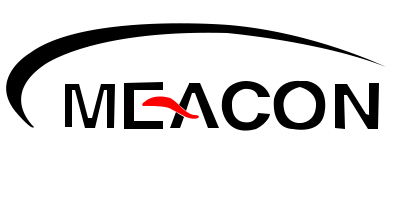Radar Level Gauges Measurement Technology
Radar level gauges are sophisticated instruments used for non-contact level measurement in various industries. They employ radar technology to measure the distance from the gauge to the surface of the material being measured. The measurement principle involves the transmission and reception of electromagnetic waves to determine the level of liquids, solids, or slurry in tanks, vessels, or silos.
The basic components of a radar level gauge include:
1. Antenna: The antenna is the key component responsible for transmitting and receiving electromagnetic waves. Radar level gauges may use different antenna types, such as horn, rod, or coaxial, depending on the application and measurement requirements.
2. Transmitter: The transmitter generates the electromagnetic waves and sends them through the antenna into the measured material.
3. Reflector: In some radar level gauges, especially those with guided wave radar technology, a reflector is used to enhance the measurement accuracy by focusing the electromagnetic waves.
4. Receiver: The receiver picks up the reflected electromagnetic waves that bounce back from the surface of the material.
5. Signal Processor: The signal processor processes the received signals and calculates the time it takes for the waves to travel to the material’s surface and back. From this time measurement, the gauge calculates the distance to the material surface, which corresponds to the level of the material.
Radar level gauges use microwave frequencies in the range of 1 GHz to 100 GHz to achieve accurate and reliable level measurements. Higher frequency radar gauges, such as those operating at 26 GHz or 80 GHz, offer improved performance, especially in challenging process conditions or with low dielectric constant materials.
The radar technology used in these gauges enables non-contact measurement, making them suitable for applications where direct contact with the material is not feasible or desirable. Additionally, radar level gauges can handle a wide range of process conditions, including high temperatures, pressures, and aggressive materials.
Radar level gauges are commonly used in industries such as oil and gas, chemical processing, water and wastewater treatment, power generation, food and beverage, and many others where accurate and reliable level measurements are essential for process control, inventory management, and safety.
Overall, the radar level gauge’s measurement technology offers excellent accuracy, reliability, and versatility, making it a preferred choice for various level measurement applications in industrial processes and storage systems.
Radar Level Gauge Selection
Selecting a radar level gauge involves considering various factors to ensure it meets the specific requirements of the application. Here are some key considerations for selecting a radar level gauge:
1. Application Type: Determine the application for which the radar level gauge is needed. Radar level gauges are suitable for various industries, including oil and gas, chemical, water and wastewater, food and beverage, and pharmaceuticals.
2. Measurement Range: Assess the required measurement range for the application. Radar level gauges come in different models with varying measurement ranges, from a few meters to several tens of meters.
3. Process Conditions: Consider the process conditions, including temperature, pressure, and the nature of the measured material (liquid, solid, or slurry). Choose a radar level gauge that can withstand the specific conditions of the application.
4. Antenna Type: Radar level gauges come with different antenna types, such as horn, rod, or coaxial, each suitable for different applications. The antenna type affects the beam angle and focusing capability, impacting measurement accuracy and performance.
5. Signal Frequency: Radar level gauges can operate at different frequency bands, such as 6 GHz, 26 GHz, or 80 GHz. Higher frequencies offer better performance in applications with low dielectric constants or challenging process conditions.
6. Output and Communication Options: Consider the required output and communication options for the radar level gauge, such as analog, digital, or HART, to ensure seamless integration with the existing control and monitoring systems.
7. Accuracy and Resolution: Evaluate the required level of accuracy and resolution for the application. Higher accuracy radar level gauges may be necessary for critical processes or custody transfer applications.
8. Process Connection: Ensure that the radar level gauge has a compatible process connection suitable for the vessel or tank where it will be installed.
9. Hazardous Area Approval: If the application involves hazardous areas, verify that the radar level gauge has the necessary certifications, such as ATEX or IECEx, for safe operation in such environments.
10. Reliability and Maintenance: Consider the reliability and ease of maintenance of the radar level gauge. Look for features like self-cleaning antennas or diagnostic capabilities to reduce maintenance requirements and improve uptime.
11. Cost: Compare the cost of different radar level gauge options while keeping in mind the overall value and performance they offer for the specific application.
Once these factors are considered, consult with a reputable supplier or manufacturer to get detailed information about the available radar level gauge models and their suitability for the application. Additionally, seek advice from experts or industry professionals to ensure the optimal selection of the radar level gauge for your specific needs.
Post time: Jul-15-2023
